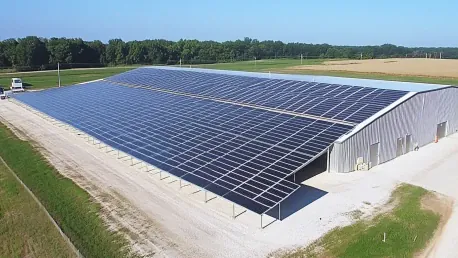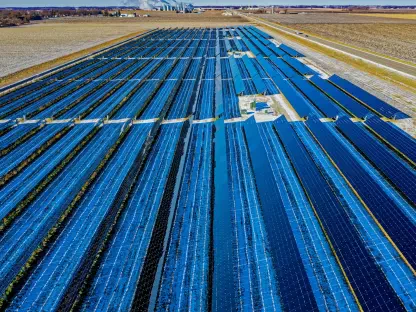The rapid expansion of renewable energy has spurred a debate on the optimal use of land, particularly regarding whether commercial rooftops should be utilized for solar panels to preserve valuable farmland. Industrial and commercial buildings often have vast, underused rooftops suitable for solar panel installations. This shift could play a pivotal role in balancing the growing demand for renewable energy with the need to protect arable land from being transformed into solar farms.
The North Northamptonshire Initiative
Rooftop Solar Panels as a Solution
Recently, North Northamptonshire Council (NNC) took a significant step toward addressing this issue. Conservative councilor Clive Hallam tabled a motion at an NNC meeting on March 6, advocating for the mandatory inclusion of solar panels on large commercial buildings and warehouses as part of future planning policies. By exploring this requirement, NNC hopes to weave solar energy into the fabric of the region’s Local Plan, which is currently in development. The motion also suggested that council buildings themselves should model this change by incorporating photovoltaic (PV) panels.
Councilor Hallam expressed the urgency of maximizing rooftop solar technology’s potential, ensuring this would not deter businesses from setting up in the area. He emphasized that maximizing the use of existing rooftops for solar energy could mitigate the pressures on arable land, preserving it for agricultural purposes. His motion’s fundamental goal is to embed sustainability in urban planning while maintaining a balance between economic growth and environmental stewardship.
Broad Council Approval
Support for the initiative spanned across party lines. Green Party councilor Emily Fedorowycz backed the motion, describing it as a “no-brainer” to safeguard farmland from being repurposed for large-scale solar farms. This move was seen as commonsensical within the council, given the dual benefit of harnessing renewable energy and conserving valuable farmland. An amendment proposed by Reform UK councilor Kirk Harrison, demanding more robust policy assurances, specific timelines, and formal annual updates on progress, was struck down by NNC Chair Lora Lawman due to concerns over resource allocation.
Despite the rejection of these amendments, Councilor Harrison supported the motion in its existing form, albeit critiqued for being somewhat vague. Executive member for climate and the green environment, Councilor Helen Harrison, echoed the sentiment that commercial rooftops are significantly underutilized for solar installations. This acknowledgment highlighted the broader agreement within the council regarding the benefits of rooftop solar energy.
Actionable Steps and Future Outlook
Implementation Plans
With the motion receiving overwhelming support—54 votes in favor with just one abstention—the focus now shifts to actionable steps. The next phase involves integrating this requirement into the Local Plan, ensuring it becomes a binding aspect of future development projects. This could pioneer a change in how energy policies are crafted not only in North Northamptonshire but potentially across other regions as well.
Ensuring the smooth implementation of this motion involves intricate planning and coordination across various stakeholders, including developers, businesses, and local communities. The council’s approach underscores the confluence of sustainability practices within urban development, setting a potential precedent for other councils to emulate. This step is expected to induce a paradigm shift in how renewable energy projects are perceived and executed at a local level.
The Broader Implications
The rapid growth of renewable energy has ignited a debate over optimal land use, particularly considering the potential for commercial rooftops to host solar panels, thereby preserving prime farmland. Industrial and commercial structures frequently have extensive, underutilized rooftops that are ideal for solar panel installations. Utilizing these spaces could significantly aid in meeting the escalating demand for renewable energy while simultaneously conserving arable land that might otherwise be converted into solar farms. By capitalizing on the vast expanses of rooftops, we can strike a balance between fostering renewable energy and protecting farmland. This strategy not only maximizes the available space but also mitigates the environmental impact, ensuring that both energy needs and agricultural interests are addressed. Such careful planning and use of existing structures could be crucial in our pursuit of sustainable energy solutions, allowing us to harness solar power efficiently without compromising our valuable agricultural resources.









